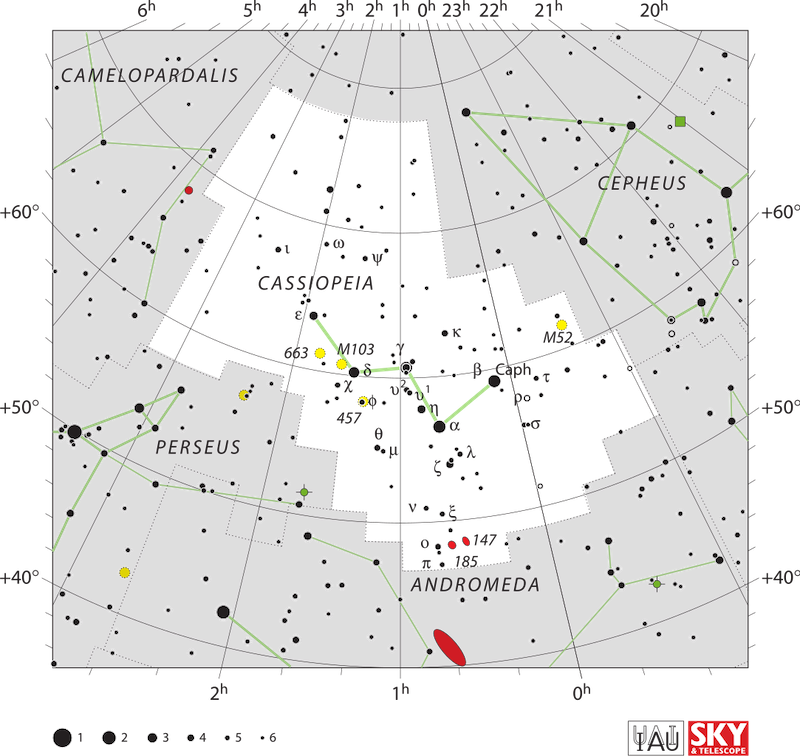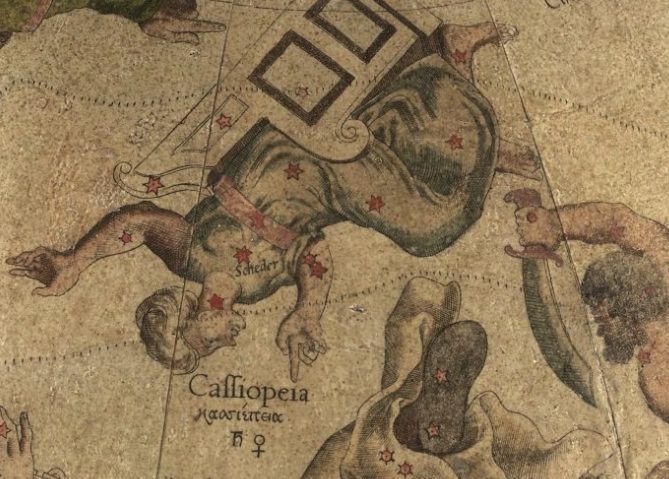
Cassiopeia the Queen, a constellation of bright stars in the northern hemisphere, is a well-loved fixture of fall and winter evening skies.
Also known as Alpha (α) Cassiopeiae, Schedar is its brightest star. And with the help of a star map, this orange-colored star is easy to find and is often used by stargazers to locate the Andromeda Galaxy.
How to find Schedar
By the way, from mid-northern latitudes, Cassiopeia is circumpolar. As a result, it circles endlessly around the north celestial pole, never (or rarely, depending on your latitude) dipping below your horizon. However, the best time to see Cassiopeia is during fall and winter evenings, since that’s when the constellation rides highest in the sky.
Basically, the bright stars of Cassiopeia trace out an M or W, depending on its position in the sky and your perspective. And Schedar, the brightest star in Cassiopeia, is located at the W’s bottom-right tip (or the M’s upper-left tip).

Science of Schedar
The star Schedar is 228 light-years away and shines steadily at magnitude 2.2. Even though skywatchers a couple of centuries ago suggested that the star varied in brightness, modern astronomers have discerned no fluctuations.
Additionally, Schedar is about four times the mass of our sun. But, Schedar is cooler than our sun. That’s because it is a red giant star. Plus, like all giant stars, it rotates slowly on its axis. Thus, Schedar takes approximately 102 days to rotate once, in contrast to about 25 days for our sun. Now that it is in the late stages of stellar evolution, Schedar is about 45 times the sun’s diameter due to the expansion of its outer layers.
The sky lore of Alpha Cassiopeiae
Even though it is brightest star in the constellation Cassiopeia the Queen, Schedar doesn’t have any fantastic stories behind it. But, like all stars, it has its own interesting history. In fact, the star’s name, Schedar, derives from the Arabic word for breast.

By the way, Schedar’s position is: R.A. 00h 40m 30s, Dec. +56° 32′ 14″
Bottom line: Schedar, the brightest star in the prominent northern constellation Cassiopeia, is easily visible most of the year from northern latitudes.











